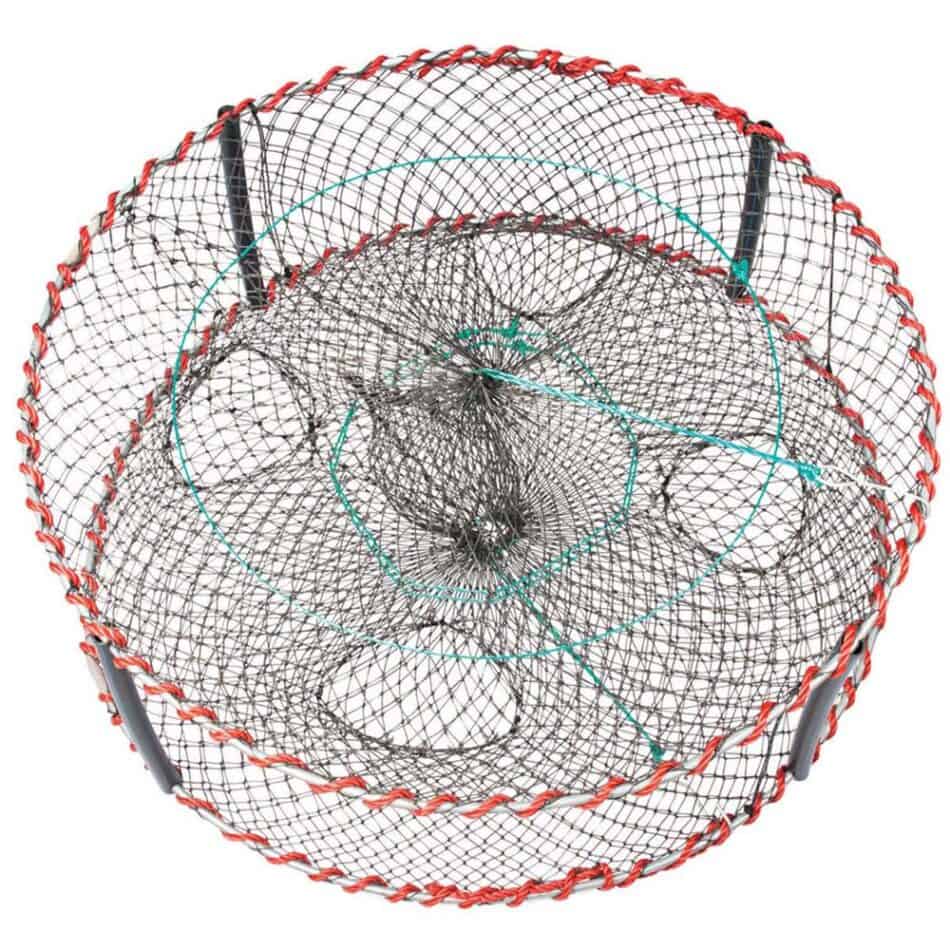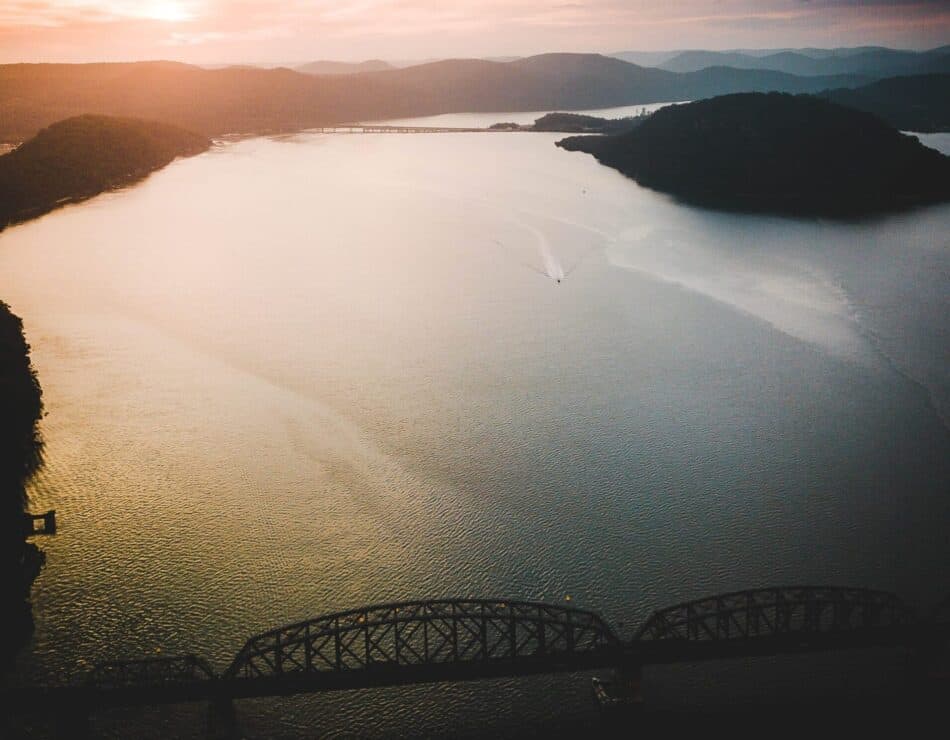Nestled between the stunning sandstone cliffs of the Blue Mountains and the vast expanse of the Sydney metropolitan area, the Hawkesbury River
You can use crab traps in the Hawkesbury River. The NSW Department of Primary Industries (DPI) allows no more than two traps per person at any time. A crab trap should measure 1.2m x 1m x 0.5m, with its diameter not exceeding 1.6m at the top or bottom, and should have no more than four entrances.
Since there are several rules and regulations

What Are Crab Traps?
Crab traps are fishing equipment used to capture crabs. They usually consist of a wire mesh or netting and are placed on the bottom of a body of water. The mesh will allow crabs to enter the trap but won’t allow the crab to escape.
You can bait crab traps
- Raw chicken
- Fish heads
- Prawns
Once you bait the trap and place it in the water, the crabs will be attracted to the bait and enter the trap.
When using a crab trap, it is crucial to check it regularly to ensure that you can quickly remove any crabs you’ve caught. Taking the crabs out will prevent them from being eaten by other crabs in the trap.
Crab Traps Requirements In NSW
Before setting a crab trap in the Hawkesbury River, or any other waterway in NSW, it is vital to be aware of the requirements set out by the DPI. These regulations are in place to ensure a sustainable crabbing experience for all and protect the river ecosystem’s health.
To use a crab trap in NSW waters, including the Hawkesbury River, it must meet the following requirements
- A minimum mesh size of 50mm (1.9 in)
- Only two traps and four witches’ hats per person are allowed in NSW waters at any time.
- It should have no more than four entrances, with none at the top of the trap.
- Must not be made of entanglement netting
- The dimensions of the trap should not exceed 1.2m x 1m x 0.5m (47in x 39 in x 19 in), with a diameter not exceeding 1.6m (62 in) at the top or bottom.
- The attached float or buoy must be clearly labelled with the letters CT and include the initial and surname, postcode, and year of birth of the person who uses or owns the trap.
- The float should be at least 100mm (3.9 in) in diameter and be 50mm (1.9 in) above the water. All the letters on the float must have a minimum of 15mm (0.5 in) high, be in a colour that contrasts with the buoy, and be visible.
- A 50-gram (1.7 oz) weight must be attached one meter or more below the buoy to prevent any rope or line from floating on the water’s surface.
- You must not set crab traps in navigation channels or areas with high boat traffic.
- You must set them three or more meters apart to allow free passage of fish.
Rules And Regulations For Crabbing In The Hawkesbury River
Although there are plenty of regulations for crabbing in NSW, there are additional requirements for crabbing in the Hawkesbury River.
Sustainable crabbing practices are essential to ensure the health of the river ecosystem and the continued enjoyment of the experience for all. When crabbing in the Hawkesbury River, it is crucial to be aware of the following rules and regulations
- Crabbing is only allowed during daylight hours.
- All crabbers must hold a current Recreational Fishing License.
- All crab traps must be labelled per the DPI requirements (as outlined above).
- A maximum of two traps and four witches’ hats are allowed per person.
- All crabbers must allow Fisheries Officers to inspect their equipment on request.
- Crabbers must not take any female crabs or crabs with eggs. These should be returned immediately to the water.
- You must measure crabs before removing them from the water. The carapace (hard shell) must be a minimum of 6.5 cm (2.5 in) for blue swimmer crabs and 8.5 cm (3.3 in) for mud crabs. You must return any crab that does not meet this size limit to the water.
- Regularly check your crab trap to reduce the chances of harming or killing other aquatic animals.
- The bag limit
for mud crabs is five per person, with a maximum of 10 per boat. The bag limit for blue swimmer crabs is 10 per person, with a maximum of 20 per boat. Exceeding these bag limits can result in on-the-spot fines or prosecution.
What’s The Best Bait For Crabbing In The Hawkesbury River?
The best bait for crabbing in the Hawkesbury River includes chicken necks, chicken frames, freshly caught fish, squid, turkey necks, or other oily baits. You can also use commercially prepared crabbing products, such as pellets.
As with any recreational activity, bait choice is a personal preference, and you may need to experiment with different types of bait to find what works best for you. When using chicken or fish as bait, it is best to use whole pieces that are still bleeding or have viscera (internal organs) attached, making them more attractive to crabs.
It is also essential to ensure that your bait is secured to your trap so that crabs can’t steal it without being caught.
Final Thoughts
Crabbing is a popular recreational activity in the Hawkesbury River and can be a great way to enjoy the outdoors and catch your dinner. However, knowing the rules and regulations is essential to provide a sustainable and enjoyable experience for all.
When crabbing in the Hawkesbury River, follow the DPI requirements for traps, check your gear for other animals before removing crabs from the water, and return any female crabs or those with eggs to ensure the continued health of the species. Most importantly, have fun and enjoy the experience.
Resource Links To Products We Use And Recommend
More Pages On Other Areas
There’s been a steady rise in interest in cruise ships worldwide. With everyone wanting to see what all the chatter’s about, many are first-timers. So, if you’re one of those individuals and...
There are always risks where there is money involved, and renting a car is no exception. Even though you are only paying for a car temporarily, you should always be aware of the risks before handing...


